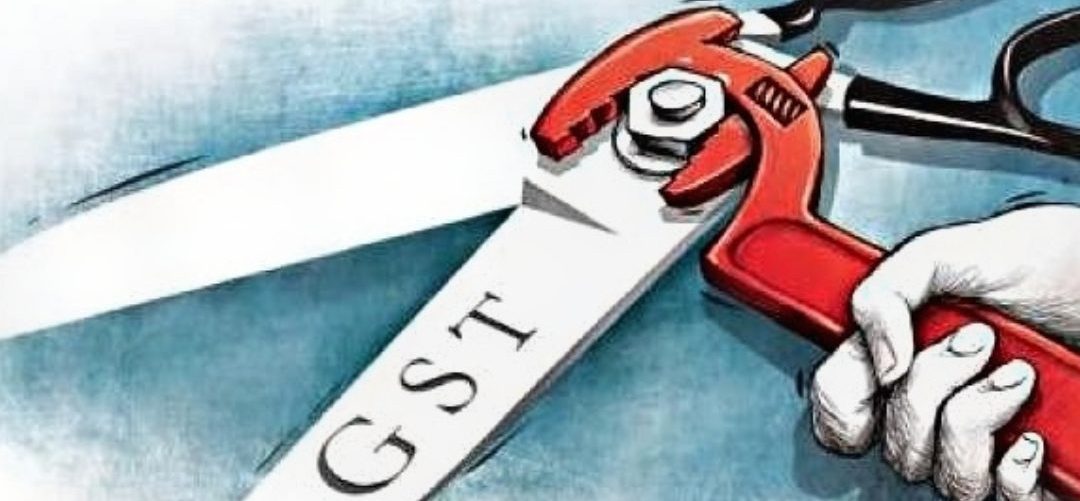Chandrajit Banerjee wrote this.
On June 30, 2022, the unified Goods and Services Tax (GST), hailed as a historic and game-changing reform, will complete five years of effective implementation. GST, widely regarded as one of the most significant tax changes in Indian history, is viewed as a shining example of cooperative federalism aimed at moving the country toward a one-nation, one-tax, and one-market regime by simplifying tax administration and decreasing taxpayer compliance burden.
The GST replaced over 17 national and state taxes, as well as 13 cesses, and brought India into line with worldwide tax frameworks. It also reduced tax slabs from about 20 before the implementation of GST to four now.
The voyage was undoubtedly fraught with difficulties. This entailed reaching an agreement among parties within the federal structure, allowing a seamless and orderly transition of present taxpayers to the new regime, and ensuring that the new system resonated with individuals’ different objectives.
Nonetheless, the proactive and collaborative approach taken by the Centre and the states contributed to the effective implementation of the major reform.
The administration should be commended for accommodating stakeholders’ different interests. Continuous discussions, explanations where necessary, and several mid-course modifications such as fine-tuning rates, raising the threshold exemptions, postponing some requirements, and providing streamlined formats for return filing are among the measures to make the regime more appealing to taxpayers.
The government also made certain that the implementation of GST did not impose an undue hardship on MSMEs. As a result, steps were taken to ease compliance, including increased threshold exemptions from GST registration, quarterly filing of GST returns for taxpayers with an annual turnover of Rs 5 crore, exemption from GST payment at the time of receipt of advances on account of the supply of goods, and a composition levy scheme, among other things. Similarly, to assist small taxpayers, the number of return files is reduced to quarterly or annual, depending on the scheme selected by the taxpayer.
The government’s consensus-building initiatives had a far-reaching influence in terms of lowering the cascading effect of taxes and integrating the Indian market by allowing smooth cross-border input tax credit. Furthermore, the tax reform raised public understanding of the indirect tax system and established an assessment-friendly tax administration. Furthermore, the connection of GSTN with other systems may boost the digitization of the economy in the future.
The GST regime also increased corporate productivity and efficiency. It led to the formalization of the Indian economy, ease of doing business, and increased transportation and storage efficiency for the industry by reducing inter-state restrictions.
Anti-profiting provisions have a specific role in the GST scheme since they are intended to safeguard consumers from undue profiteering. This guarantees that the advantages of an input tax credit or a tax rate decrease are passed on to consumers. The GST advance ruling mechanism efficiently provides clarity.
Despite the destruction caused by the epidemic, the GST regime displayed resiliency. Its revenue collecting performance is outstanding. While sales were reduced by the temporary closure, receipts have surpassed one lakh crores since October 2020.
According to the most recent figures, tax receipts increased by 56 percent year on year in June to reach ‘1.44 lakh crore, the second-highest since April 2022. Revenue would continue high as economic activity picks up, compliance improves, and service sector development accelerates.
According to GST registration statistics, the number of indirect taxpayers has increased by 50%. The number of voluntary registrations has grown significantly, particularly among small businesses that buy from larger businesses and seek to claim Input Tax Credits (ITC). The filing of tax returns has improved significantly.
Hopefully, the work on developing a faultless GST system will continue. To broaden the tax base, the tax filing procedure should be streamlined. Furthermore, the rationalization of the GST tax system, beginning with a three-slab structure, should be expedited.
The government may choose to streamline the intricacies of input tax credit and categorization even more. A single centralized registration system and an examination of the inverted duty structure are also critical. The establishment of GST Appellate Tribunals may be accelerated to shorten the time it takes to file appeals.
Electricity, alcohol, petroleum products, and real estate are still exempt from GST, hindering a smooth flow of input tax credit. To begin, the government may want to think about bringing petroleum goods, particularly ATF, under GST. This would be especially advantageous to the aviation industry, which is heavily influenced by growing fuel prices. Similarly, LNG, which is utilized as a feedstock in many sectors, might be placed under the ambit of GST and input tax credit made accessible.
It is hoped that the path of fine-tuning the system to make the country a national market will continue, and that our tax system would be in line with global best practices.

